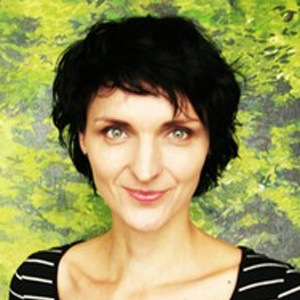
Polish painter Grażyna Smalej combines conventions of figurativism and abstraction to create strikingly original compositions full of color and vibrant emotional resonance. For the last several weeks I’ve had the pleasure of conversing with Grażyna about her work, published here as our first artist interview on Art Minnow.
Jacob Lee: I’d like to explore with you the relationships between figure and landscape in your work: I think of you as a figurative painter, but while representational elements, and human figures in particular, are ubiquitious, they are almost always subordinate to the background. It is interesting.
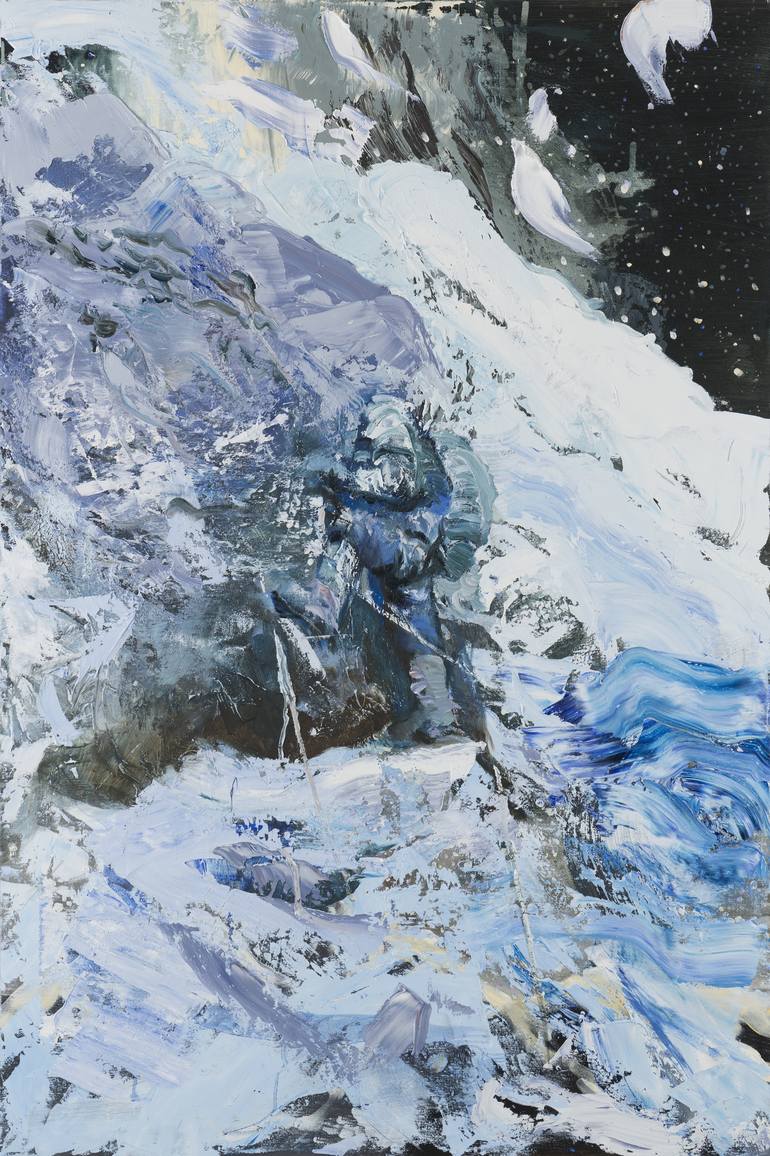
Grażyna Smalej: Indeed, as you noticed, I am a figurative painter. I love abstraction but I am very attached to narration. I am a storyteller. Hence human figures are ubiquitous on my canvases, carrying a variety of stories and organizing the chaotic space of stains. The dominance of the landscape above the figure is not obvious. If we imagine the picture without human figure, it becomes indefinite, random and chaotic – like nature, as the real. Only man gives meaning, names, builds stories, while he himself is irrelevant. That’s why I often paint small people, miniature, the size of a worm, sometimes unnoticeable, sometimes completely independent from the background, sometimes completely integrated.
One could say that I carry out experiments with Perspectivism. The landscape is sometimes the scene of various events, but most commonly it is absolutely indifferent. Trees are all the same whether in their shadows someone is resting, kissing or killing. The water accepts everything – swimmers, fishermen and the drowned. In the same way, in the air you can experience anything – drama or delight, and the starry sky will shine as always, in spite of us, independent on our moods, love or despair; rainbows will appear after a rain, regardless of our history. There is nothing else left for us but to affirm this merciless beauty.
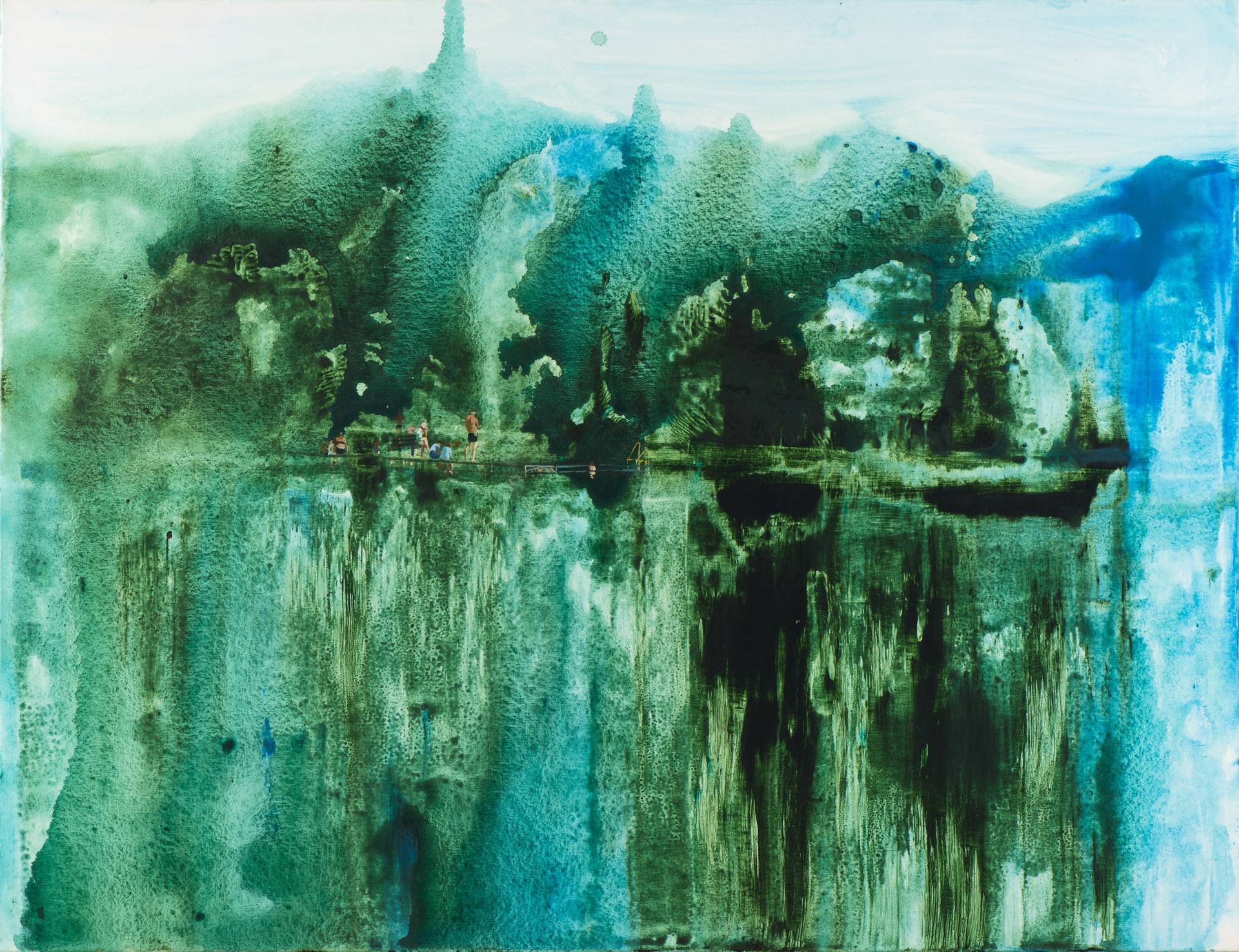
Jacob Lee: The situations depicted in your work tend toward the ordinary–people walking in gardens, people chopping wood, people attending wedding parties–even while they are situated within contexts painted in resplendent color. What is it that draws you toward choosing a particular subject for a painting, and how do the stories you want to tell inform your approach? For example, is your approach to depicting the landscape–its colors, texture, and arrangement–intended to be complementary to the narrative, or is it orthogonal to the narrative, a helpless affirmation of nature’s merciless beauty, as you poetically described it?
Grażyna Smalej: You are right, the stories I tell are not very spectacular; there is no drama within. Even when I paint soldiers and tanks, it is not a war only military exercises. I avoid drama and psychologism mainly for this reason that I find it too easy, and at the same time simply boring. I am interested in balancing on the border between ordinary day and holiday. I am following situations around me, from which I draw ideas. I particularly like these marginal situations when nothing happens. Perhaps in a moment something will happen and maybe it has already happened? The answers I leave to the viewer. I take pictures or look for at Google when the idea comes to my mind. The main story in my paintings takes place, however, at the dimension of proportions, colors and light, figures are only a stamp.
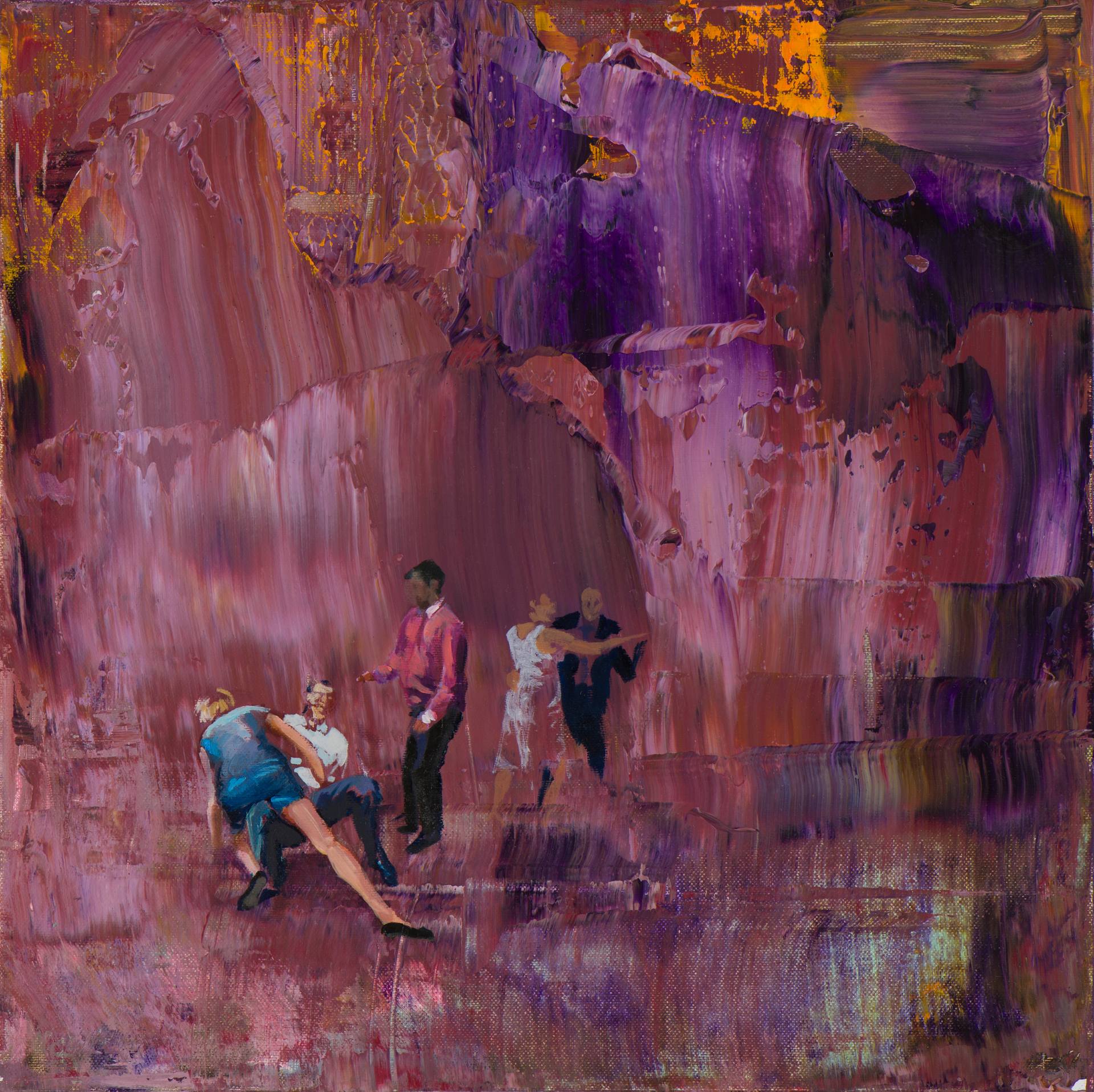
But as for your question about the landscape, I do not have one single answer for it, because sometimes I construct landscape consciously and from the beginning together with the story (The tree is a tree, grass is grass.), but at other times, in contrast, the image eludes me, and instead of trees forms a green lake, and instead of grass a cloud. I am vigilant and I accept these changes. Then we can talk about the orthogonal to the narrative as you have had nicely specified.
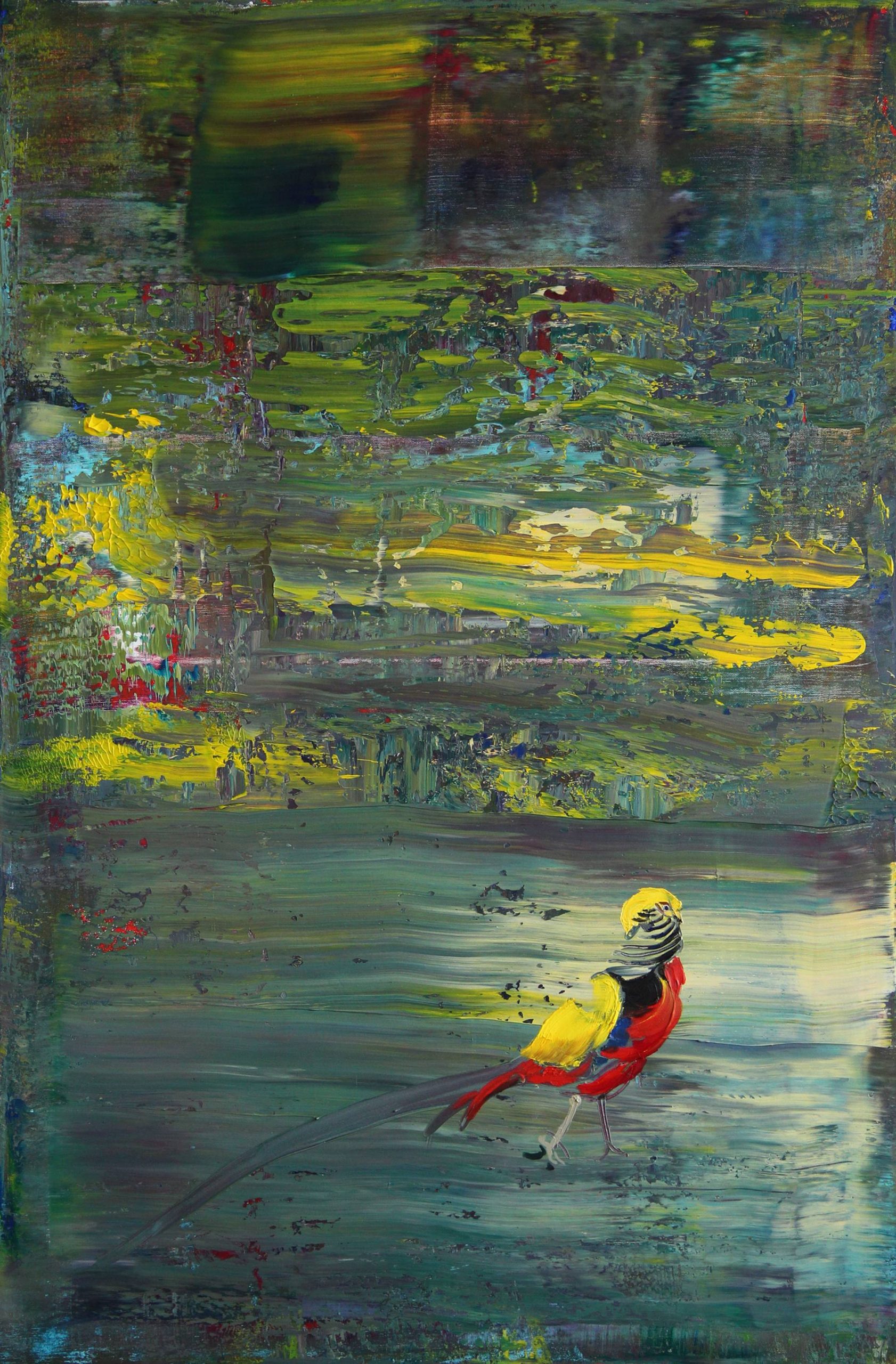
Recently I explore precisely these areas of randomness in painting. I splash paint like Pollock, reflect like Max Ernst or smears large spatula like Richter, or all at once. Finally, I painted a few abstract paintings. Well, maybe not quite, because these are the images of the cosmos. Is cosmic space an abstract?
Jacob Lee: Some of your recent work does indeed appear to revel in randomness. I am thinking about a number of paintings in your Everest climber series: At the Hillary Step, or Fighting the Mountain, for example. Can you tell me more about these? What got you interested in painting this series?
Grażyna Smalej: Last year, when I started painting Himalayas, I had become ill. I was thrown into the margins of the world of healthy people and faced a severe treatment task. It started with a photo, where I saw a lonely figure on the mountain. It struck me that it was me, that I felt like a lone mountaineer, outside the borders, under difficult conditions, who has to overcome a number of obstacles. At the same time, the awareness of obtaining a new perspective was prevailing. At first I painted the mountains from the imagination, but I quickly became interested in the highest mountain in the world and also in its history. Up until now, mountaineering was not interesting to me. I considered the mountains to be a weak subject and a guarantee of kitsch. I experience anxiety about heights; I do not even go to the Polish Tatras. But thanks to art I have reached three eight-thousanders and Everest, several times in a month. I read a lot and watched a lot of movies, also made by those amateurs on Youtube who got the top; they stimulated my imagination the most. I felt this great effort almost physically. This is the great power of the art, you can imagine whatever you want. I just paint it. This figure climbing up at Hillary Step, the last section before the climax, is very difficult, because it is a few meters of quite vertical rock, and already in the zone of death, it was me.
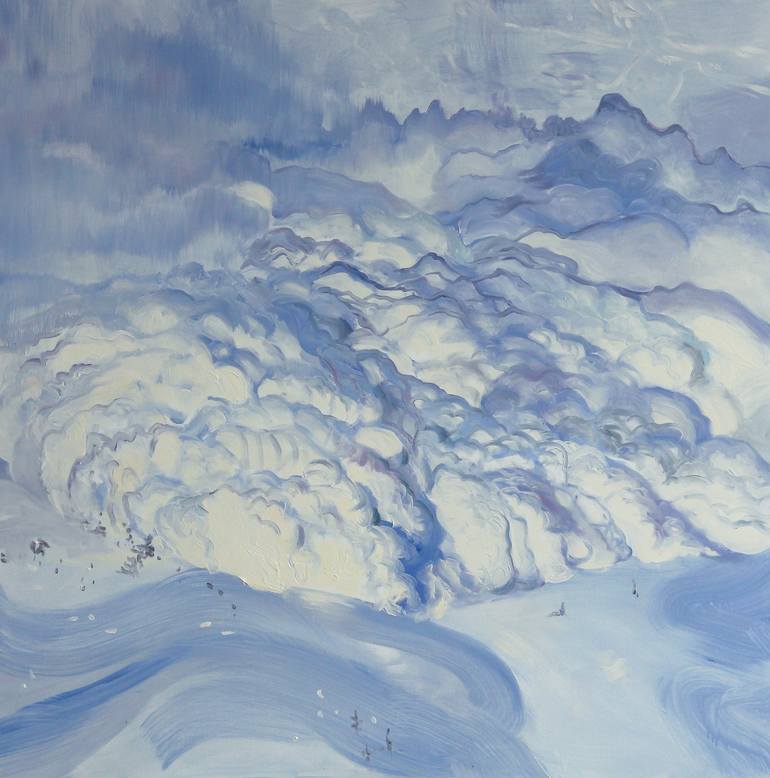
Jacob Lee: There is an interesting juxtaposition in your explanation, between your anxiety about heights and your anxiety about your illness. You confront one by symbolically confronting the other. I wonder how important this kind of substitution is to the creative process of artists. I do not mean simply that it is a useful way of avoiding being obviously autobiographical in one’s work. I mean that it may be more creatively productive to engage in a dialectical exchange between one’s own personal narrative, and an external, ostensibly non-personal, subject (like mountain climbing).
Grażyna Smalej: Sometimes I ask myself: why art? What is my role in human history? And the only reasonable answer that comes to my mind is, in spite of everything, therapy through art, therapy by storytelling. Reduction of anxiety, overclocking happiness, meditation. And the recipients of my paintings who value my visualizations are probably the ones who feel the same way and need the same therapy. I am very pleased with this bond made with the images, the more it takes place on a very subtle level. I am not as autobiographical as for example Frida Kahlo, but for some reason I choose objects which are metonymic or metaphoric substitutions of my life. Maybe because I am very curious about these objects? By exploring the topic of Himalayanism, I have seen many amazing stories opening up to new ones. The more dimensions, the better. I painted self-portraits, but now when it comes to paying attention to my own image at the mirror, I am completely satisfied with the regular application of a powder brush on the face, painting eyes and mouth.
Jacob Lee: How do you see your work fitting into the current intellectual and political milieu of Poland and Europe?
Grażyna Smalej: My artistic work is completely marginal. It is personal and escapist. I do not engage in politics or social stuff. In art, I do not see such a power which is needed to improve the world. Although it does happen that I will find myself surprised by the effects of actions by Eco-artists or artists from critical art that bring about fantastic results and shed light on social or political problems. However, I do not see any place in this field for myself. I am too attached to the beauty in a very traditional way and I feel it is my place where I still have a lot to do, in these two dimensions, brushing on canvas.
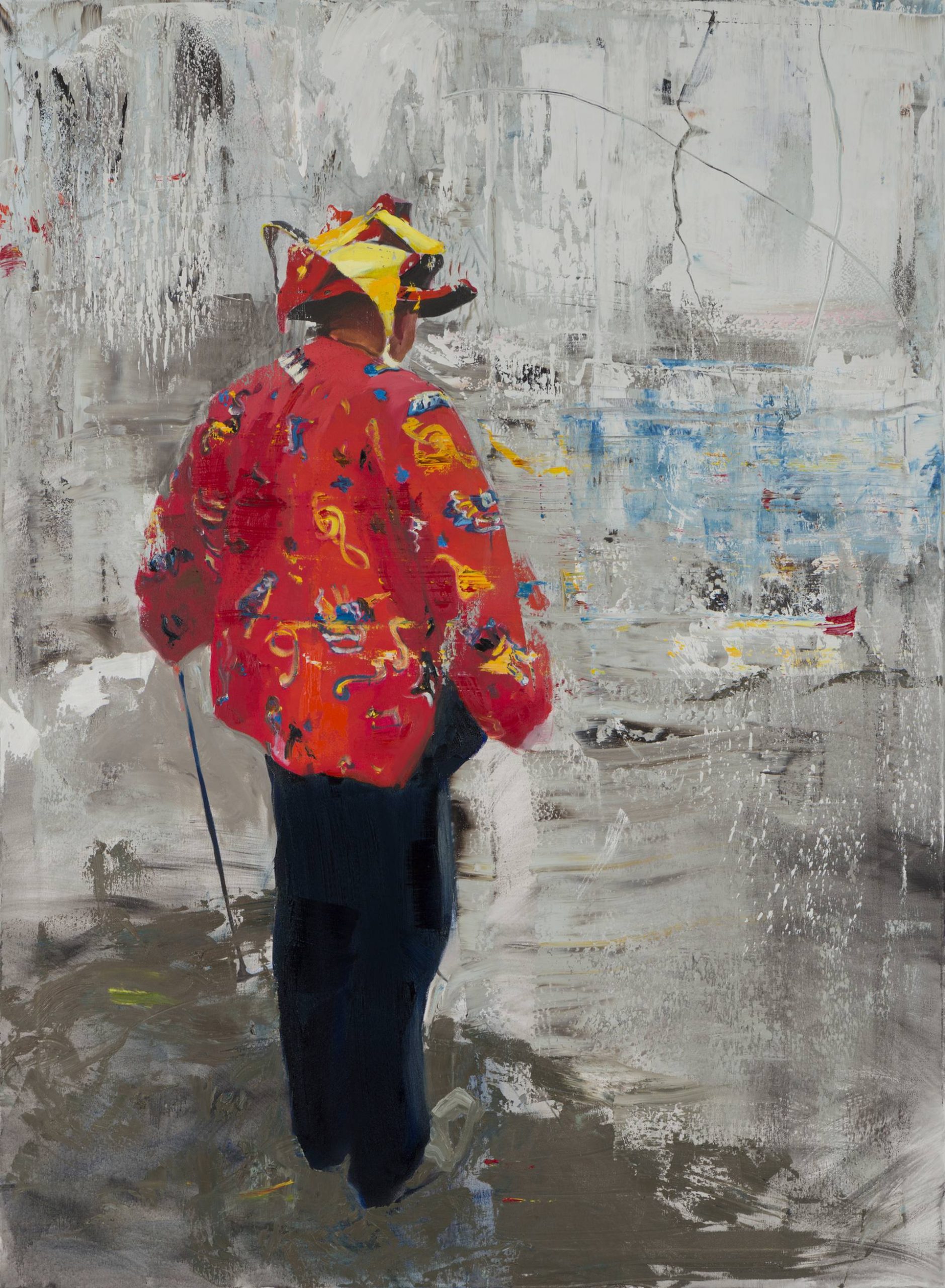
The death of painting was proclaimed a long time ago, but finally received a great commentary in Adrian Ghenie’s Marcel Duchamp’s funeral (2009), in which he paints a revolutionary artist lying in a coffin covered with multicolored wreaths of flowers among purple fabrics sensuously painted as if by master Velazquez. I read it as a manifesto of a radical painter who does not quite agree with the burial of painting. My “Performans” series was born in a similar spirit. How many times I participated in performances or I watched the video, environment, the whole of my contemplation was usually reduced, not without reflection of course, to seeing images.
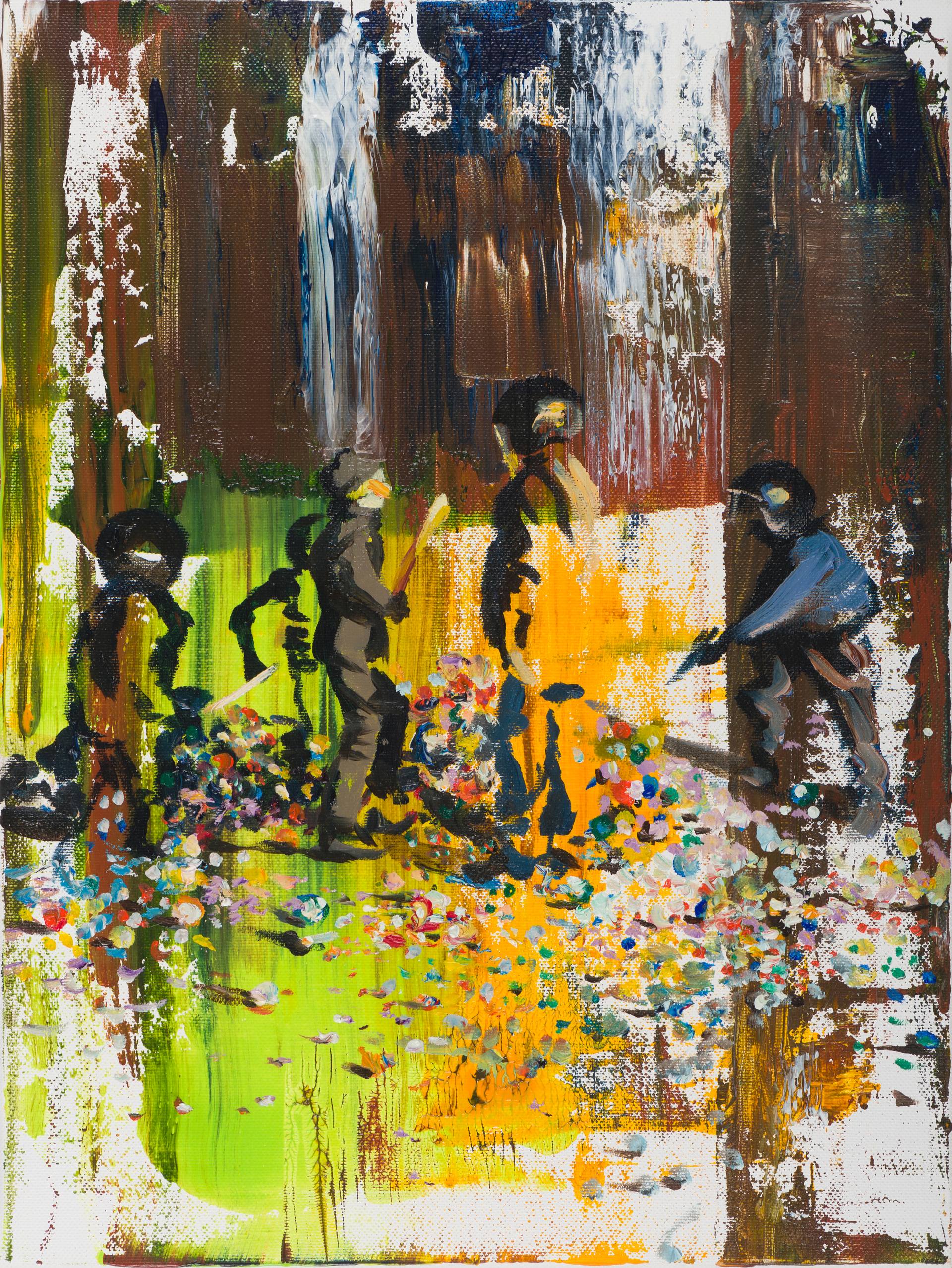
To this image-painting manifesto, I would add one more thing. We cannot give up aesthetics, beauty and what we like. This is an artificial amputation. It is like getting rid of the senses, or at least their handicap. There is a trend in the art world where it is straightforwardly said “If I like something” in art, it means that there is something wrong, that you should suspect the artist’s opportunistic intentions, or that it simply decorative, which in turn is not acceptable. As a result, we get rid of the workshop; if we are still painting, we cultivate miserabilism, surrealism and horror, pimples and secretions. It is nothing but a new opportunism, supported by institutions.
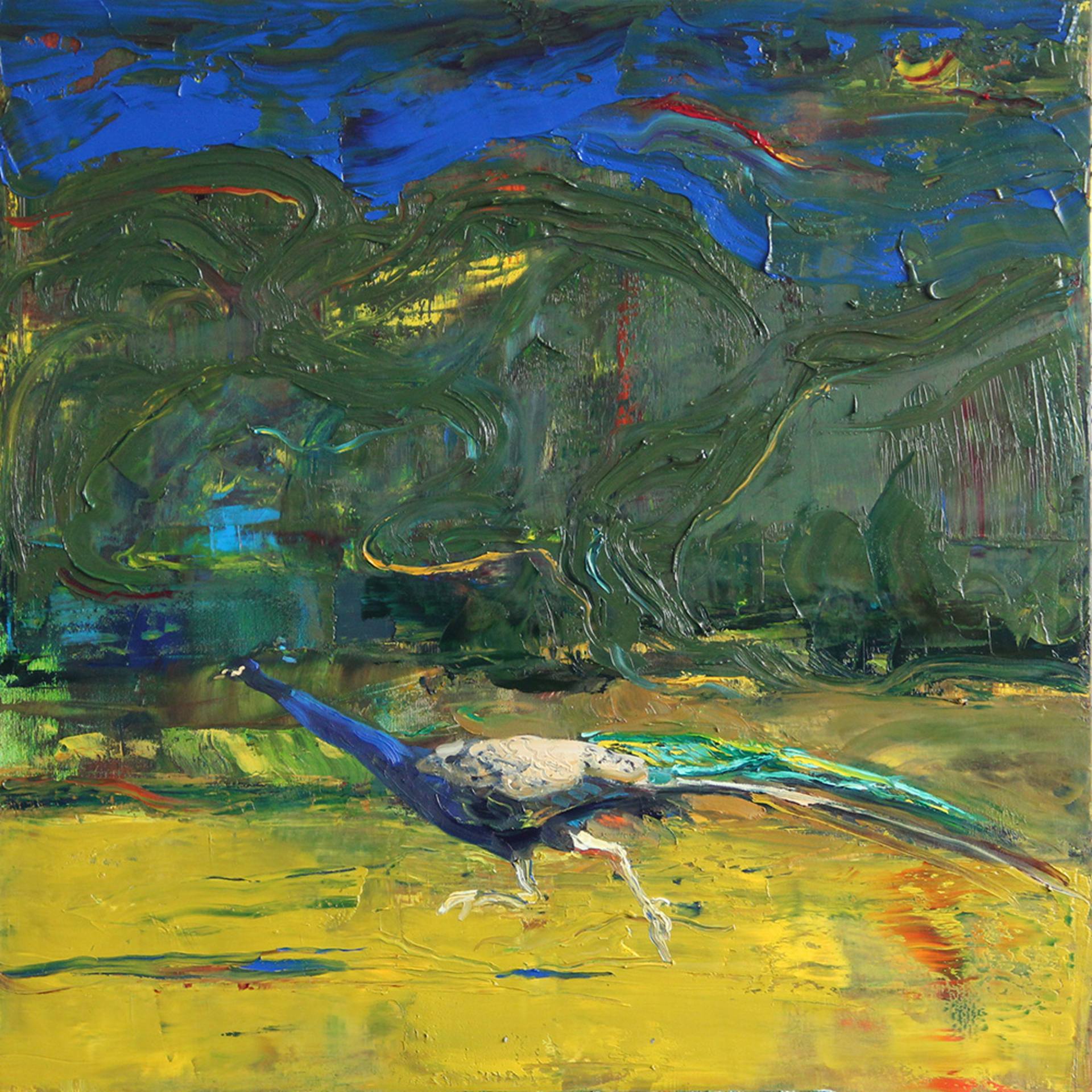
That is why I painted pheasants. Chinese pheasants – a natural manifestation of the formidable form, the power of color and drawing, like the Darwinian peacock, presenting their distance to the sophisticated speculation of cultural theorists. Culture as a peacock tail, aesthetics as our integral basic need. This is what I wanted to announce by painting my pheasants. At this moment I am working on a series about bees – I am going back to the multicolour of painting agents. Pictorial explosion, despite everything.
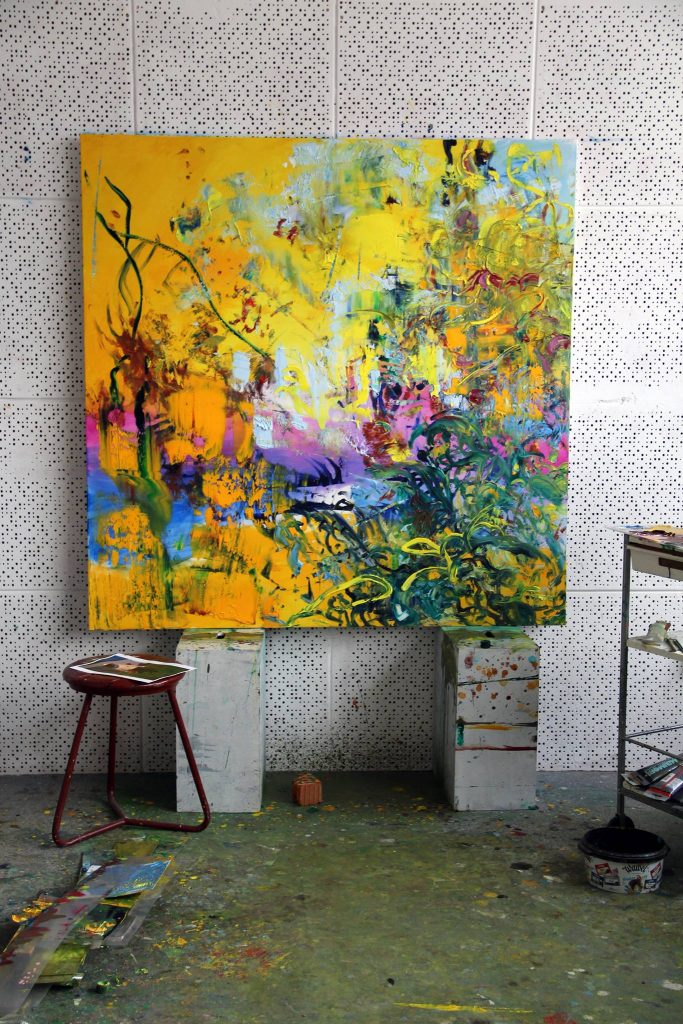
Jacob Lee: Would you mind telling me more about this new series you are working on?
Grażyna Smalej: As for the latest cycle, it is a story about bees and multiflorous garden of buzzing life, culminating in blossoming moment, bursting with colors, fleshy stuffed with sun, vortex, life and possible extinction. Bees have been with me since childhood. My Dad always had few beehives. He is passionate. I had an allergy on bees and several times in my life I swelled a bit. But I love honey, all that smell of apiaries and wax. Three years ago I photographed my dad when he went to the bees, in the strong sunshine of May. He was just after chemotherapy, and came to his favorite animal, full of energy. Now I’m going to bees. I painted him then and now the subject returned to me. On one of my latest paintings I paint again the figure of my Dad, but the rest, the background, is, so far, rather abstract.
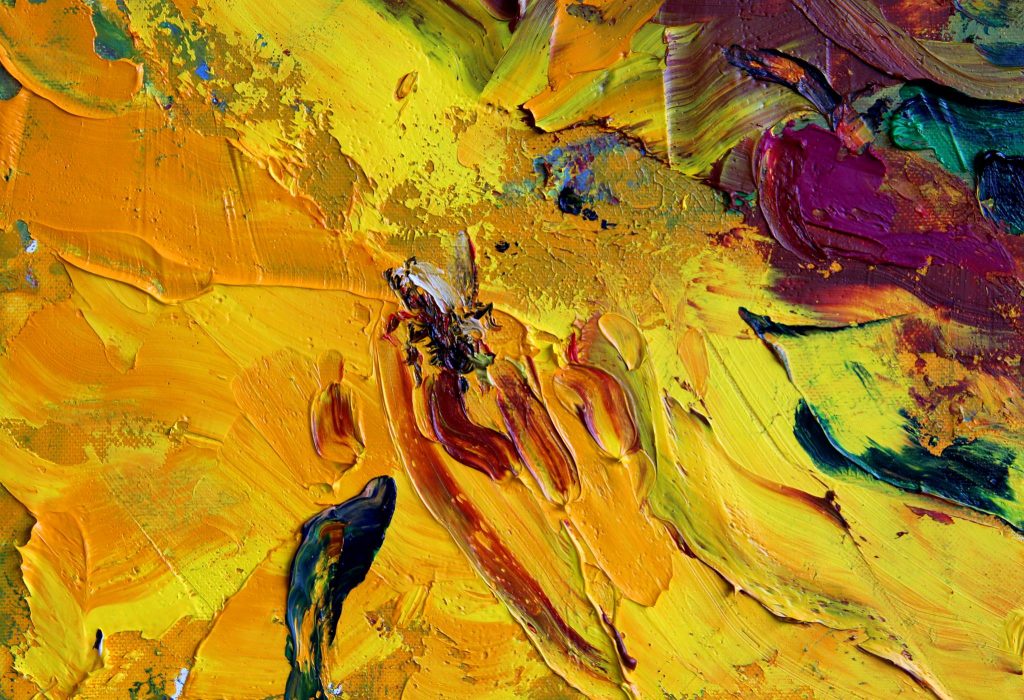
Jacob Lee: I am glad that your father had something that gave him pleasure to which he could return after chemotherapy. A small thing perhaps, but in difficult times small things matter. I hope he is well.
Grażyna Smalej: It’s OK! To the production of honey, Dad has joined the production of a wonderful rose wine.
Jacob Lee: The bees are well camouflaged in the chaotic profusion of colors. Would you describe your process? It looks as if you are scraping paint across the canvas?
Grażyna Smalej: What is created first, is the abstraction. It is very fleshy, sensual and colorful, often thick texture. Sometimes I paint the bees into wet paint, but sometimes is quite opposite, I paint after it is dried. Sometimes I leave the canvas without bees. They are still there, from the beginning. Maybe I should subtract instead of adding? I often consider this. It’s an experiment, as always.
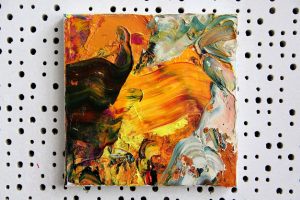
Jacob Lee: I want to return to your description of something you said earlier. I am not sure I understand your description of culture as a peacock’s tail. The elaborate displays of male birds like the peacock, are usually analyzed in terms of costly signaling: the expense of the male peacock’s tail is such that it is demonstrative of the bird’s suitability as a mate; inferior males simply cannot afford them. In describing culture as a (Darwinian) peacock’s tail, are you thinking in these terms, or some other?
Grażyna Smalej: When I speak of the peacock’s tail I also am referring to this aspect of rivalry; it also occurs between artists. But when I speak of it, I rather and primarily refer to the general concept of artistic creativity as self-expression, which is surplus to basic needs. It is a peacock tail which attracts the attention of others, attracts and delights, it is the production of beauty and prestige (also erotic, understood as the desire to possess the work, and, eventually, admiration and appreciation for the author). This is the conception or understanding of art, which is close to me.
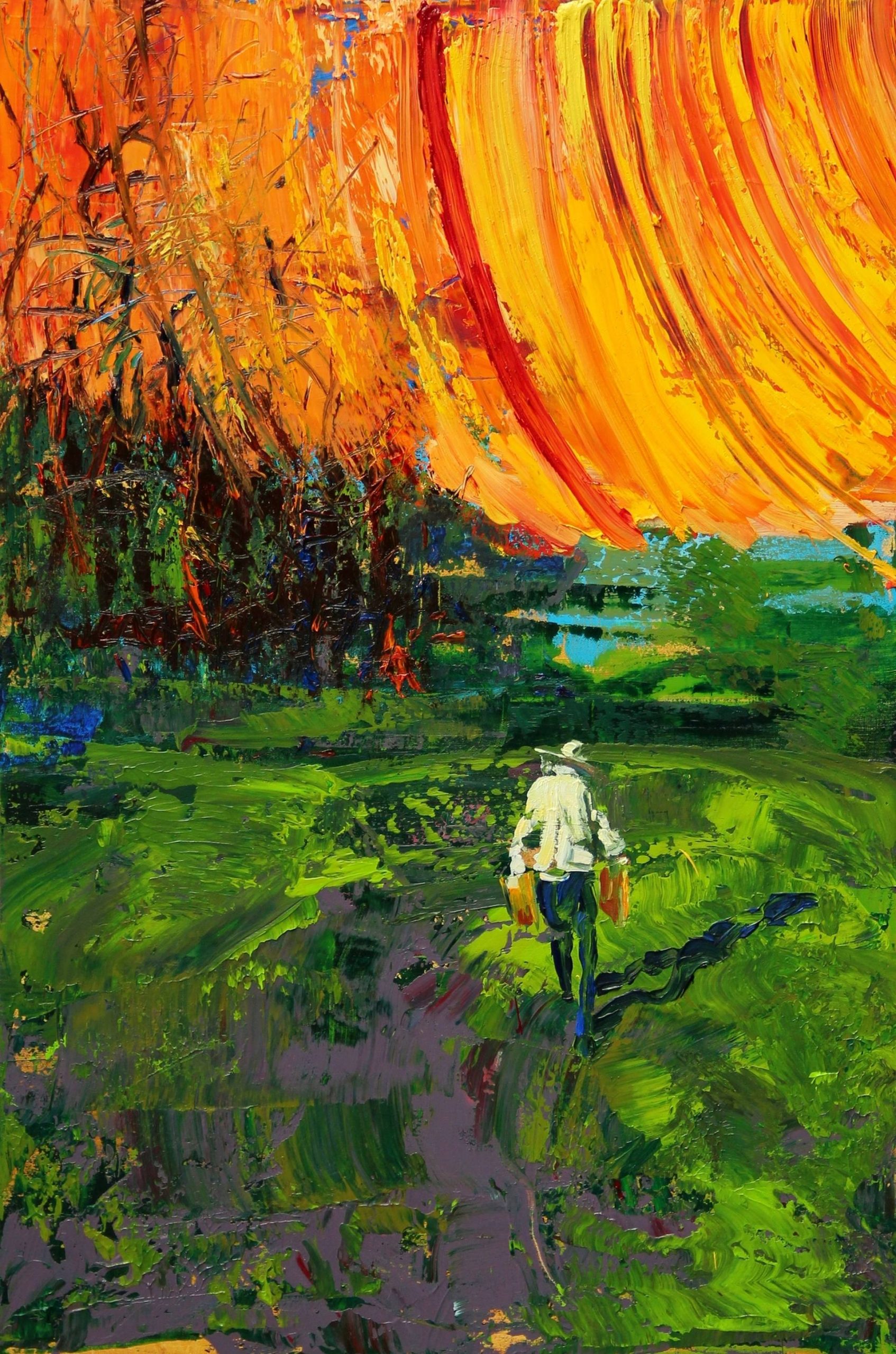
Jacob Lee: It is gratifying when one’s work is admired. Such admiration is a strong motivator; for artists who depend on sales of their work, earning such admiration is a practical necessity too. On the other hand, we have all seen artists who respond too readily to what consumers demand, or who paint the same motif over and over and over so that their body of work is stagnant and lifeless. We see in your work a few unifying themes and motifs, but also a lot of change over time. How would you say that your work and your relation to your work have evolved over the course of your career? I see that some of our earlier work had a more realist approach, e.g. many pieces in your Bath series, and some nudes circa 2008 and earlier.
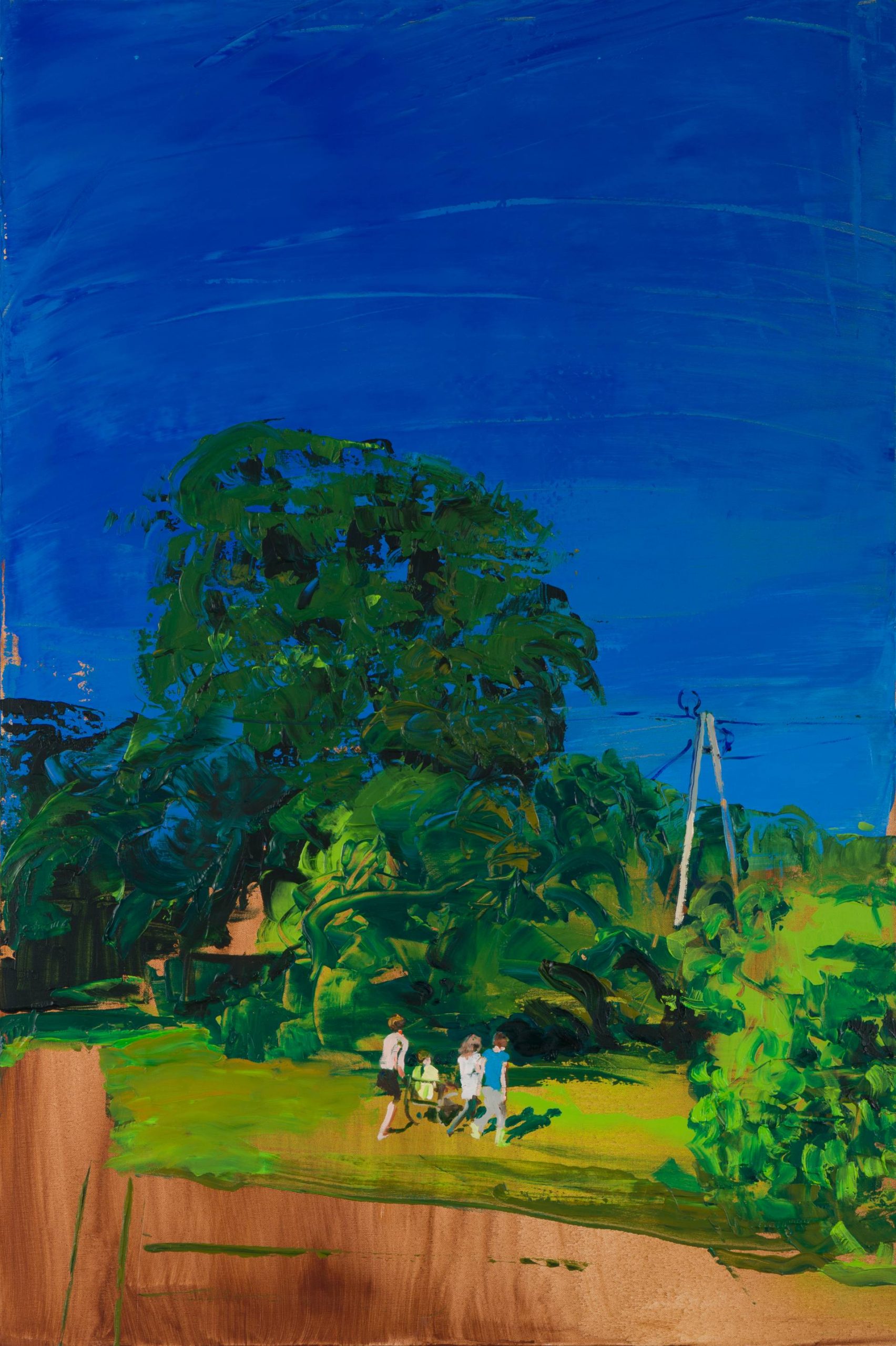
Grażyna Smalej: In fact, I have always had a problem with staying in one style or topic. Maybe I get bored rapidly, or maybe I like change? I mastered the realistic discipline during my academic studies, and it came to me quite easily. I found it fascinating to reproduce / to represent nature, to look into it insightfully. It was such a time. Sometimes I come back to realism.
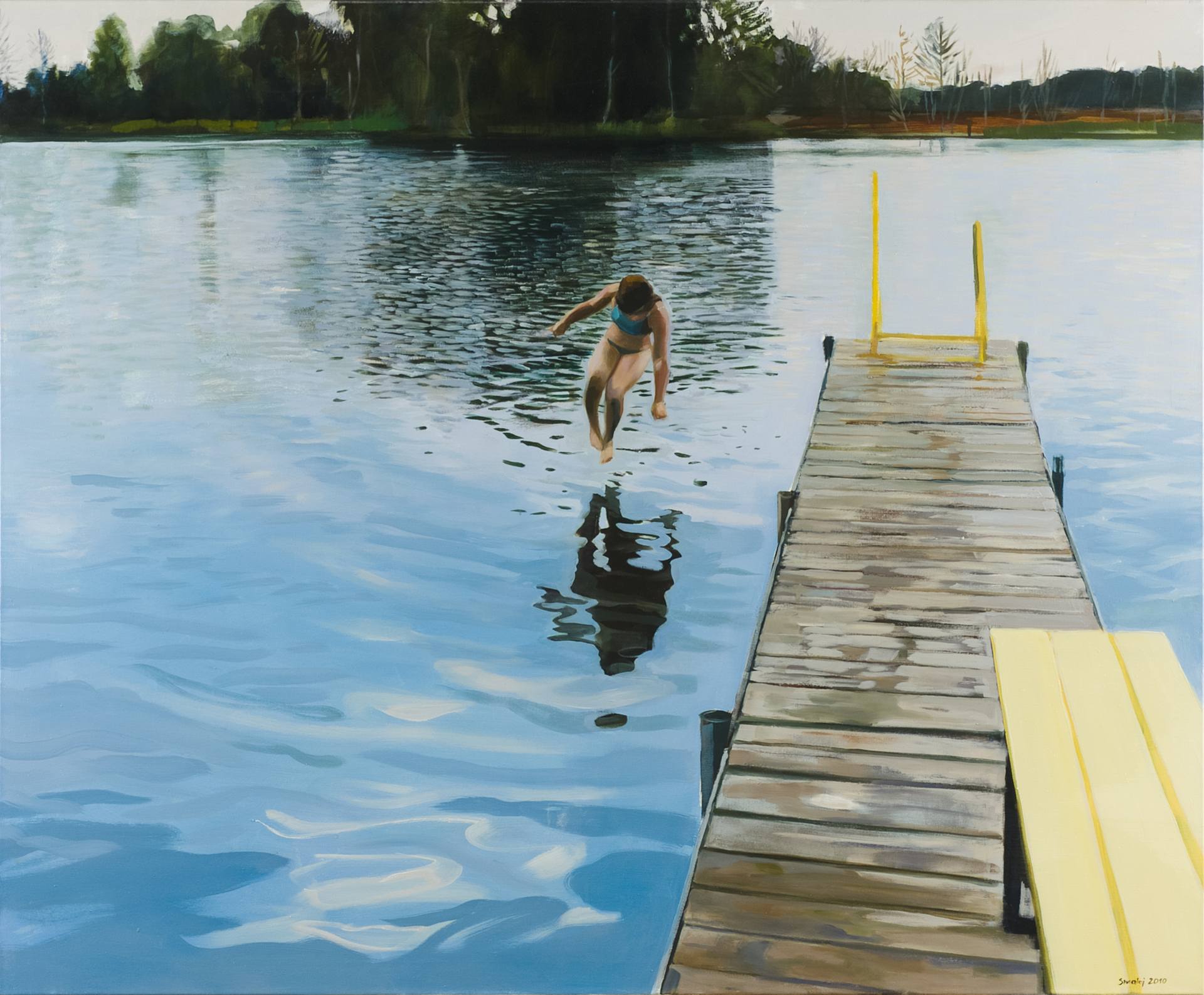
It used to bother me that my paintings are inhomogeneous. It is, for example, difficult to make an exhibition of them, because they do not look like they were painted by one person. Now I evaluate it positively. I would have died of boredom if I had to paint in the same circle or in the same way. Life is changing, I am changing, things are changing – I am responding to those changes in the way which is, I think, the best at the moment. I do not intend to limit myself in any way. Art is all about it – to open and not to strengthen the boundaries.
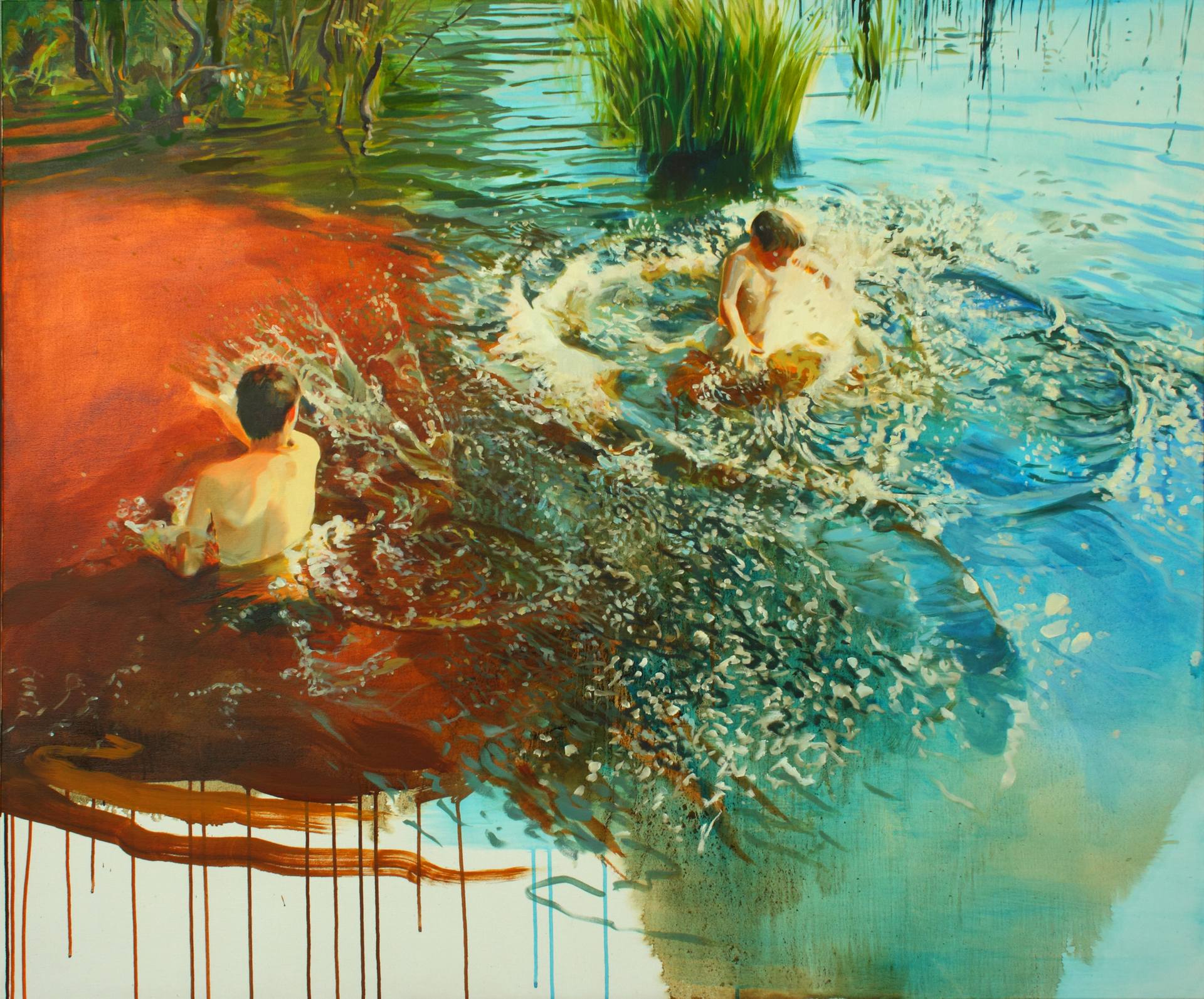
interview.
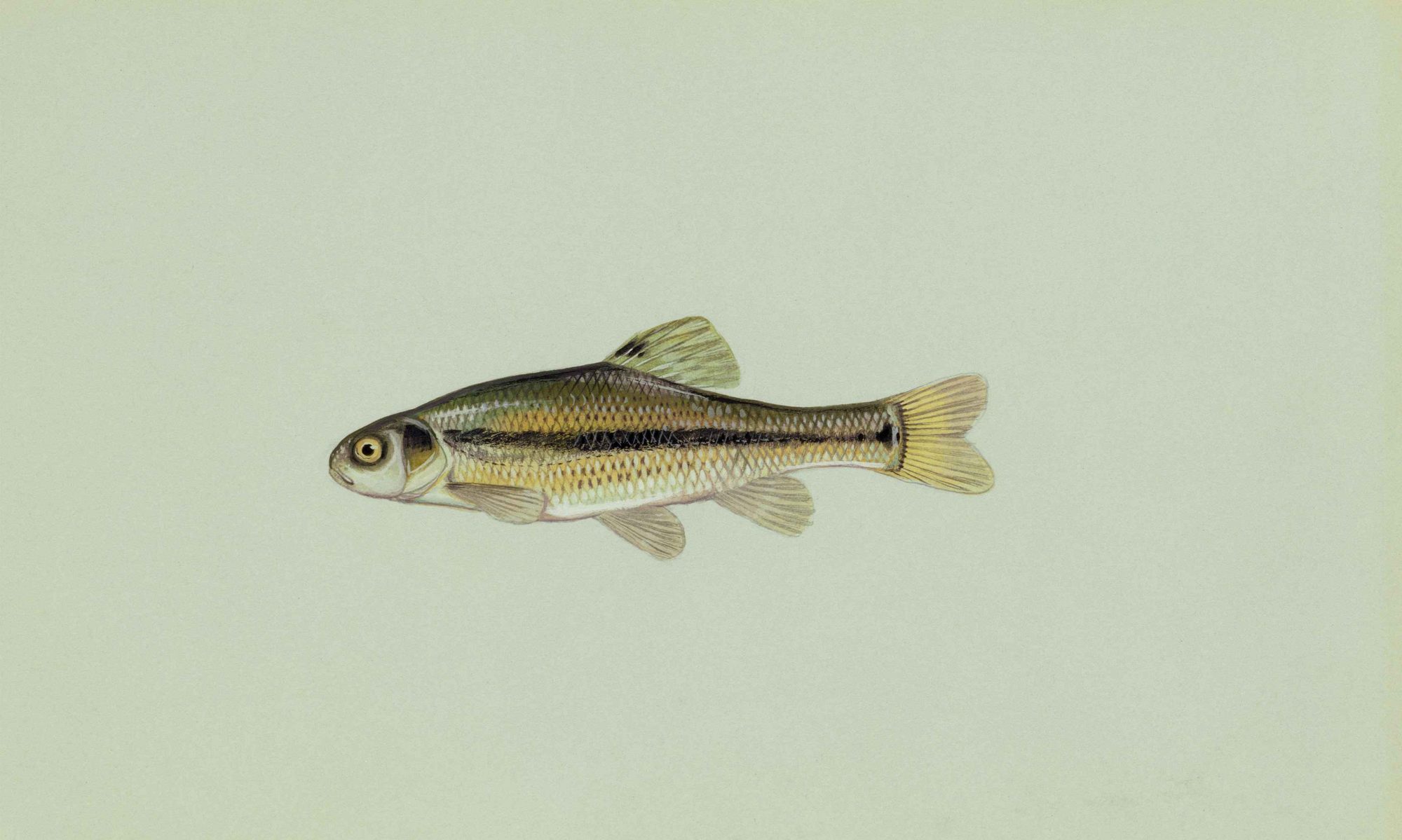
Interesting, informative interview. I have alway thought to exhibit my work as if it were a group show of various artists. Assigning each faux artist with a group of totally dissimilar works. Letting each explain the works themselves.